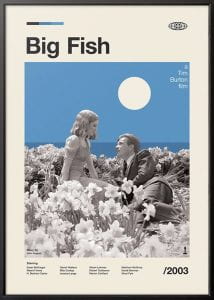Hi all, this is Sydney Long and I chose to do my research project on the development of 6 Chalmers Street, from its time as one of the most successful slave markets to a modern-day museum honoring African-American history. This location stands out to me because it has endured so many vast changes and it has adapted to fit whatever the owner of the time intended the place to be. From housing an extremely successful slave mart to acting as an auto repair store and now a museum, I am fascinated with the building’s hidden history. So far in my research I have found that the building serves as a representation of Charlestonians view on African-American history and historic preservation. As an example, for several years the building was used as a site to sell meals that aligned with “slave recipes” which so clearly represents the ignorance that many Charlestonians held at the time, as this food was sold not even 100 years since the last slave was sold in the very same room. Another interesting connection my research has shown me was the influence of Susan Pringle Frost on the history of the Old Slave Mart Museum. I enjoyed our in class discussion on Frost surrounding her work creating the Preservation Society of Charleston, and my research made the connection that it was Frost herself who sold Miriam Wilson the Old Slave Mart, who would go on to renovate the location and open it for future generations to learn from.

Hey, I’m Mary Hughes Lawrence and I chose to do my research on the debutante ball. I am researching how this event has changed over time and negative stereotypes associated with this event. I chose to do this topic because I will be attending a debutante ball in my hometown this year and I will also be a debutante my junior year of college. I honestly did not know much about this topic until I started doing research. The only thing I really knew was that the debutantes had to wear a white wedding dress and gloves and the meaning of it was for girls to be presented to society. Through my research I have learned that the debutante society was extremely hard to get into and was often kept secret. To get in you had to be wealthy and have the right connections to the right people. In the past the debutante was to present daughters into society to get married, while today it is not like that and is more for community building, the experience, and to keep a tradition alive. While some of the traditions and customs of the debutante have changed, many have stayed the same. White dress and gloves, a waltz, a presentation of the girls, and roses have remained constant throughout the years. This event is present all over the United States but is really practiced in the South, a big debutante ball is right here in Charleston. Through my paper I am hoping to draw connections on how this event reflects southern culture as well refuting negative stereotypes associated with this event.

Hey everyone, I am Maggie May and I chose to do my research on changes within country music. I am researching how soul and hillbilly music blended together in Nashville to help bridge both racial and cultural divides. From the music of Charley Pride and Earl Scruggs, the sounds and image of country music changed to reflect the changes that were happening across the United States. I chose this topic because I found it very interesting that people telling their stories through songs were able to bring people together and forge new relationships in the studios of several record labels. I knew a small amount about this topic through many family members who lived in the hills of Virginia who remembered that they felt like people had a better understanding of who they were and what they stood for. I hope to discuss how these musicians provided a voice and created an identity for their people in country music while also reworking the music and the sound to reflect these new ideas coming onto the stage. These styles changed both studio sessions and on stage performances while bringing new light to what everyone assumed a fading craft. Through my paper, I am hoping to highlight how the genre and the country changed as a result of these newly incorporated styles.

All of our topics tackle different issues of race, identity, gender, and social classes. That being said, our topics all center around the development of southern identity through time and the acknowledgement of social classes’ influence on society. Sydney’s topic investigates the acknowledgement of African-American history, which has previously been intentionally covered up and hidden by wealthy white social classes. Due to civil rights movements and transferral of ownerships allowed for the once booming slave mart to now serve as a museum to honor a section of Southern race and identity. Mary Hughes’ topic discusses the debutante which is associated with an elite white community and young women. She discusses the history of this tradition and how it has changed over the years. Maggie’s topic discusses the changes in country music that helped change ideals within the nation itself. She discusses the new sounds and genre that changed the music and brought people closer together.

 continued since slavery, where blacks continue to have less opportunity to lift themselves out of poverty and tragic events have more of an impact on their community; the negative consequences felt for years. In 2005, 9
continued since slavery, where blacks continue to have less opportunity to lift themselves out of poverty and tragic events have more of an impact on their community; the negative consequences felt for years. In 2005, 9
 Similar to the origination of many Southern mannerisms and culture, the “piazza” of the Single House was thought to have originated in the West Indies, with Afro-Caribbean origins. An interesting fact about the Single House design was that it was constructed to prevent fires! The Charleston Single House exemplifies the resourcefulness of Charlestonians in response to the subtropical climate and narrow but deep house lots in the area. The Charleston Single House also has ties to Antebellum culture. The Single House would often act as the “Big House” for slave owning Charlestonians, with it being surrounded by servant/slave buildings. The simple architectural style of the Charleston Single House has deeply rooted ties to the Southern way of life.
Similar to the origination of many Southern mannerisms and culture, the “piazza” of the Single House was thought to have originated in the West Indies, with Afro-Caribbean origins. An interesting fact about the Single House design was that it was constructed to prevent fires! The Charleston Single House exemplifies the resourcefulness of Charlestonians in response to the subtropical climate and narrow but deep house lots in the area. The Charleston Single House also has ties to Antebellum culture. The Single House would often act as the “Big House” for slave owning Charlestonians, with it being surrounded by servant/slave buildings. The simple architectural style of the Charleston Single House has deeply rooted ties to the Southern way of life.











